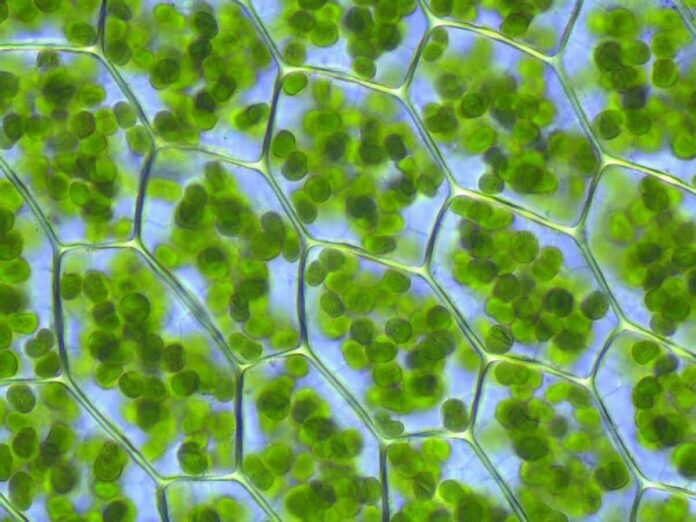A groundbreaking study by chemists at MIT has uncovered the secret to the remarkable efficiency of photosynthetic cells.
These cells use light-harvesting proteins to convert sunlight into energy for producing essential sugar molecules.
The researchers discovered that the disorderly arrangement of these proteins, called the antenna, plays a crucial role in achieving nearly perfect quantum efficiency, where almost every absorbed photon generates an electron.
Understanding Energy Transfer
The MIT team focused on purple bacteria, which thrive in oxygen-poor water and provide a good model for studying photosynthetic light-harvesting.
Using a technique called ultrafast spectroscopy, which analyzes events in extremely short timeframes, they investigated how energy moves within individual light-harvesting proteins.
Challenges in studying energy transfer between multiple proteins arose due to the need for precise positioning.
To overcome this, the scientists created synthetic nanoscale membranes called nanodiscs that mimic natural cell membranes.
These nanodiscs allowed them to control the placement of two primary light-harvesting proteins found in purple bacteria, LH2 and LH3.
Disorder Boosts Efficiency
By utilizing the distinct properties of LH2 and LH3, which absorb different types of light, the researchers observed the energy transfer between these proteins.
Their findings showed that when the proteins were positioned close together, energy transfer occurred more quickly, within about 6 picoseconds.
In contrast, when the proteins were farther apart, the transfer process took around 15 picoseconds.
Faster energy transfer resulted in higher efficiency because less energy was lost during the transfer.
This highlights the important role of the disorderly organization of proteins in living cells, which, contrary to previous beliefs, proves to be more efficient than ordered arrangements.
The Ingenious Design of Evolution
Gabriela Schlau-Cohen, the senior author of the study, emphasized the significance of their discovery.
She pointed out that the disorderly organization observed in biology is not a drawback but rather an advantageous feature.
Living organisms seem to have evolved to take advantage of this randomness, maximizing energy transfer efficiency within photosynthetic cells.
Implications for the Future
The implications of this research go beyond understanding photosynthesis in purple bacteria.
With the ability to measure inter-protein energy transfer, the researchers now plan to investigate similar processes between other proteins.
They aim to explore the intricate energy transfer between antenna proteins and proteins of the reaction center, shedding light on even more complex aspects of cellular energy conversion.
Unlocking the Secrets of Green Plants
While purple bacteria provided valuable insights, the scientists are not stopping there.
Their future endeavors will involve studying energy transfer between antenna proteins in other organisms, including green plants.
This broader exploration promises to unlock a wealth of knowledge, providing a comprehensive understanding of photosynthetic processes in various life forms.
In conclusion, the MIT chemists’ study has uncovered a remarkable secret behind the efficiency of photosynthetic cells.
The disorderly arrangement of light-harvesting proteins plays a crucial role in enhancing energy transfer efficiency, showcasing the ingenuity of evolution.
Armed with this newfound knowledge, scientists are poised to make groundbreaking advancements in renewable energy research and beyond, harnessing the incredible potential of photosynthesis to shape a sustainable future.
Frequently Asked Questions (FAQ)
A: Photosynthetic cells are specialized cells found in plants, algae, and some bacteria that can convert sunlight into energy through a process known as photosynthesis. These cells contain chlorophyll, a pigment that captures light energy and initiates the production of sugar molecules.
Near-unity quantum efficiency refers to the exceptional phenomenon where almost every absorbed photon of light in photosynthetic cells generates an electron. This high efficiency is crucial for maximizing the conversion of energy, allowing organisms to effectively utilize sunlight as a source of energy.
The researchers utilized a technique called ultrafast spectroscopy, which employs short laser pulses to study events occurring within extremely short timeframes, ranging from femtoseconds to nanoseconds. They designed synthetic nanoscale membranes called nanodiscs to control the distance between two light-harvesting proteins embedded within the membranes. This enabled them to measure the process of energy transfer between the proteins.
Faster energy transfer within photosynthetic cells leads to higher efficiency as it minimizes energy losses during the transfer process. When energy is rapidly converted, it reduces the chances of undesirable processes, such as nonradiative decay, occurring. Thus, accelerating the speed of energy transfer enhances the overall efficiency of photosynthesis.
The researchers discovered that proteins arranged in a disordered manner within the light-harvesting complex exhibited higher energy transfer efficiency compared to proteins arranged in an ordered lattice structure. This finding challenges the conventional belief that ordered arrangements are more efficient. The study suggests that biological systems have evolved to take advantage of the benefits provided by disordered organization, potentially opening new avenues for understanding and optimizing energy transfer processes in living organisms.
Building upon their successful measurement of inter-protein energy transfer, the MIT researchers plan to investigate energy transfer between other proteins within photosynthetic cells. Specifically, they aim to study the transfer of energy between antenna proteins and proteins of the reaction center. Additionally, they intend to explore energy transfer processes in other organisms, such as green plants, in order to broaden our understanding of photosynthesis across different species.
Understanding the mechanisms behind efficient energy transfer in photosynthetic cells can inspire the development of more effective solar energy technologies. By learning from nature’s designs, scientists can potentially enhance the efficiency of artificial photosynthesis systems and advance renewable energy conversion. This research opens up new possibilities for harnessing solar energy to address the global energy challenge and transition towards sustainable solutions.
More information: Proceedings of the National Academy of Sciences (2023). DOI: 10.1073/pnas.2220477120. doi.org/10.1073/pnas.2220477120

